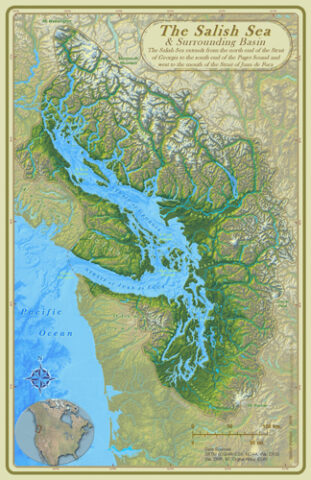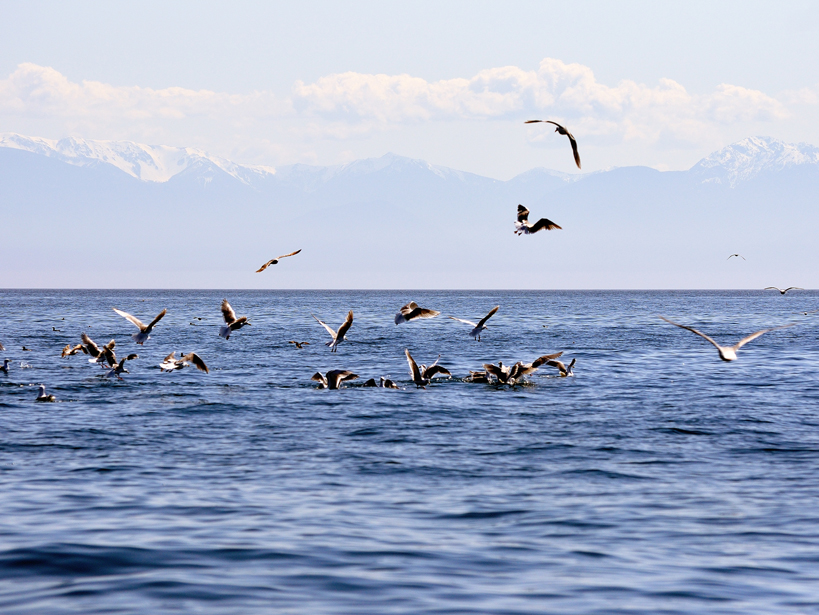Summer winds along the west coast of the United States upwell dense, nutrient-rich water from the ocean depths onto the continental shelf throughout the California Current System, a region that stretches from Baja California to southern Canada. The upwelled nutrients fuel phytoplankton populations and influence marine life across the food chain.

In the Pacific Northwest, however, the coastal waters are particularly nutrient rich. Underwater canyons here increase upwelling, and the continental shelves are wider than those to the south, which helps retain the nutrients just offshore. The Pacific Northwest’s continental shelf also sees more freshwater because of outflow from the Columbia River and the Strait of Juan de Fuca, which is the pathway through which all the water from the inland Salish Sea reaches the open ocean. Nineteen major rivers and runoff from 45 watersheds freshen the Salish Sea, which, in addition to the Strait of Juan de Fuca, includes Puget Sound and the Strait of Georgia.
Davis et al. examined the role of the Salish Sea in delivering nutrients to the continental shelf. The researchers found estuary-enhanced upwelling in the Strait of Juan de Fuca to be a critical source of nitrogen to shelf waters, accounting for almost half of the primary productivity on the Vancouver Island shelf and a third of productivity on the Washington shelf.
Specifically, their model also shows that 98% of the nitrogen coming out of the Strait of Juan de Fuca actually originated in the ocean. Although riverine inputs account for a very small portion of nitrogen delivered to the shelf, the estuarine circulation set up by freshwater inputs drives enhanced upwelling—marine nitrogen is sucked into deep waters of the strait through offshore canyons, mixed into surface waters by tidal currents, and returned to the coastal ocean at the surface.
The authors estimate the strait is a more important supplier of nitrogen in Pacific Northwest coastal waters than the Columbia River. The authors also show that the strait’s nitrogen contribution is comparable to that supplied by local wind-driven upwelling along the Washington coast. (Journal of Geophysical Research: Oceans, doi: 10.1002/2014JC010248)
—Eric Betz, Freelance Writer
Citation: Betz, E. (2015), Salish Sea a key source of regional marine nutrients, Eos, 96, doi:10.1029/2015EO025287. Published on 3 March 2015.
Text © 2015. The authors. CC BY-NC 3.0
Except where otherwise noted, images are subject to copyright. Any reuse without express permission from the copyright owner is prohibited.

